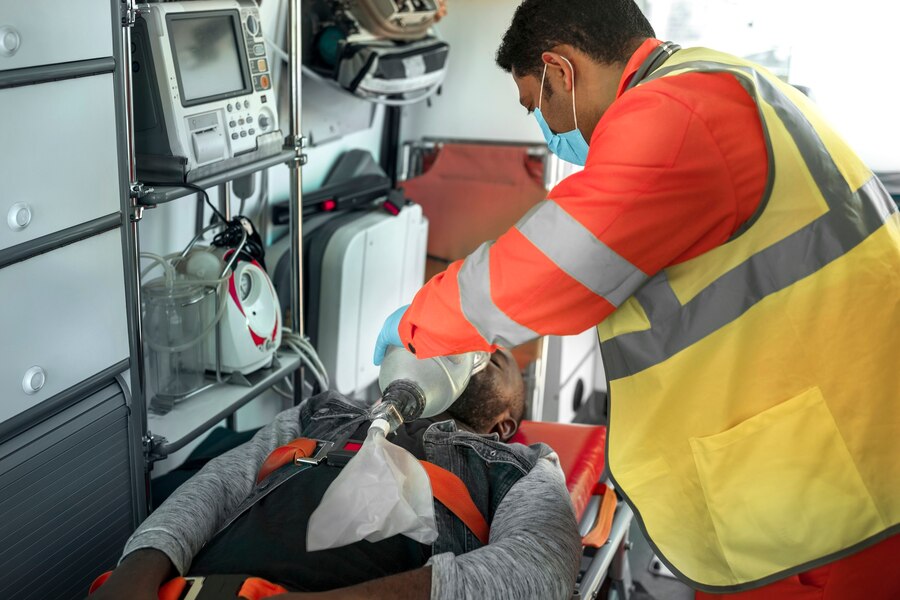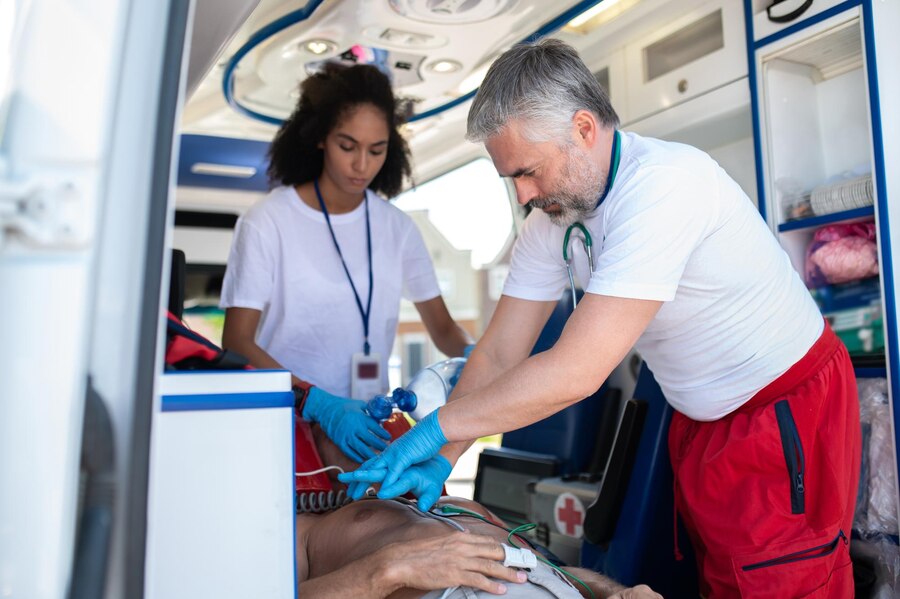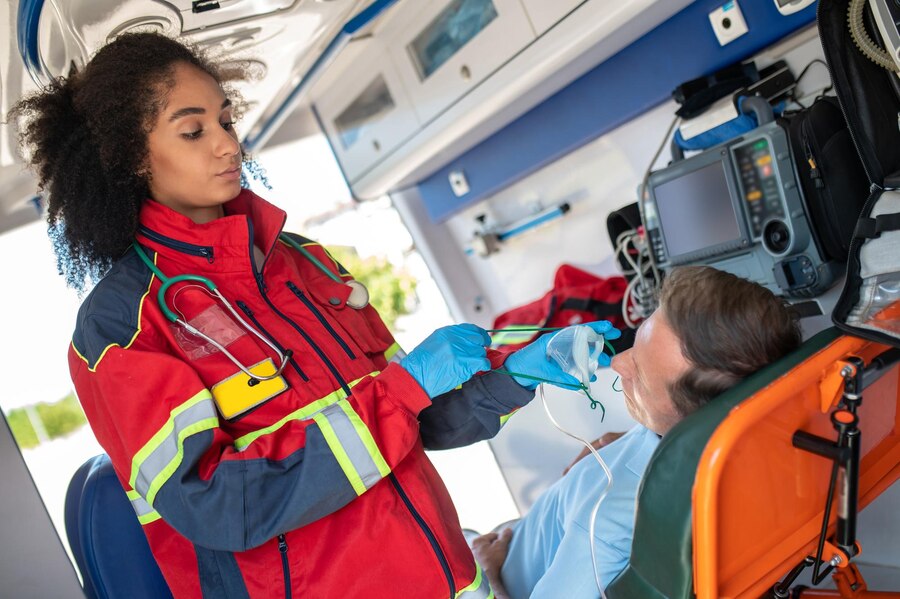Providing emergency care in Montana demands a particular blend of resilience, quick thinking, and a solid foundation. If the call of service in this magnificent state resonates deeply with you, then securing your EMT certification here is your definitive next adventure.
The path to certification, especially passing the rigorous National Registry of Emergency Medical Technicians (NREMT) exam, can feel as immense as Montana itself. But don't let that overwhelm you. At How To NREMT, we're your seasoned guides. We deliver the strategies, tools, and support you need to confidently pass the NREMT exam on your first attempt.
The Path to EMT Certification in Montana
Becoming a certified Emergency Medical Technician in Montana involves a structured and clear pathway, primarily overseen by the Montana Board of Medical Examiners (BOME), which manages Emergency Care Provider (ECP) licensure. This state board ensures that all licensed EMTs in Montana meet stringent competencies, preparing them for the unique and often demanding environment of pre-hospital care across urban centers and expansive rural landscapes. Methodically fulfilling these requirements is crucial for a smooth and successful certification process.
Here’s a clear and detailed breakdown of the steps you'll need to follow to achieve your EMT certification in Montana:

Step 1: Fulfill Foundational Eligibility Criteria
Age Requirement: Candidates must be at least 18 years old. That’s the minimum legal age to make independent clinical decisions, drive emergency vehicles, and carry out interventions under Montana’s scope of practice.
Educational Background: A high school diploma or GED is required. It confirms you're prepared for the academic rigor of EMT training and capable of understanding medical terminology, procedures, and documentation.
Current CPR Certification: You’ll need an active Basic Life Support (BLS) certification for Healthcare Providers, typically from the AHA or ARC. This proves you’re proficient in chest compressions, rescue breathing, and AED use.

Step 2: Complete a Montana BOME-Approved EMT Training Program
You must enroll in an Emergency Medical Technician training program that has received explicit approval from the Montana Board of Medical Examiners. These rigorous programs are offered at various community colleges, technical schools, and accredited training institutions located across Montana. They are meticulously designed to provide a comprehensive and robust foundation in emergency medical care, integrating both essential theoretical knowledge through didactic sessions with crucial practical application in simulated real-world scenarios.

Step 3: Pass the National Registry of Emergency Medical Technicians (NREMT) Cognitive Exam
Following your successful completion of a Montana BOME-approved EMT training program, the next step is to qualify for and then pass the NREMT cognitive (written) exam. This national examination serves as the standardized assessment of your acquired knowledge and, critically, your ability to apply essential EMS principles effectively across a variety of realistic emergency scenarios. professional mobility.

Step 4: Apply for Montana EMT Licensure through the Board of Medical Examiners
Once you have successfully passed the NREMT cognitive exam, the final action is to submit your official application for Montana EMT licensure directly to the Montana Board of Medical Examiners. This is the critical step necessary for obtaining your legal authorization to practice as an EMT within the state.
The process typically begins by creating an account through the Montana Department of Labor and Industry's eLicense system.
You’ll Need:
- Proof of NREMT certification
- Verification of your completed EMT training
- A background check
- A $50 application fee (subject to change)
Make sure everything is submitted correctly to avoid delays

Step 5: Maintain Your Montana EMT Licensure
Your EMT license in Montana is valid for two years and expires every March 31st of the renewal year.
What You’ll Do:
Complete 40 hours of continuing education under the National Continued Competency Program (NCCP) model. This ensures you stay current with evolving protocols, treatments, and EMS best practices. Track your hours carefully; letting your license lapse means you can't legally work until it's restored.

What the NREMT Cognitive Exam Actually Tests
The NREMT cognitive exam is adaptive, which means the difficulty adjusts in real time based on your answers. You’ll face between 70 to 120 questions, but the test can end early if the algorithm determines your performance has met the passing threshold.
Here’s what you’ll be tested on:
- Scene Size-Up and Safety: Recognize hazards and secure the scene before engaging with the patient. This includes identifying environmental risks and coordinating additional help if needed.
- Primary Assessment: Quickly evaluate airway, breathing, circulation, and consciousness. This early intervention window is critical.
- Secondary Assessment: Conduct a more detailed evaluation using tools like SAMPLE and OPQRST. This is where you piece together the full clinical picture.
- Patient Treatment and Transport: Provide interventions like bleeding control, airway support, medication assistance, and prepare for safe patient movement and transport.
- Operations: Cover documentation, communication, equipment management, and legal/ethical responsibilities like informed consent and refusal of care.
Your NREMT cognitive exam will typically present between 70 to 120 questions. The test's adaptive nature means it can conclude once a definitive passing standard is met by the adaptive algorithm, even if you haven't answered all possible questions. This inherent unpredictability of the CAT format underscores the critical importance of being comprehensively prepared across all content areas, rather than just focusing on specific topics.
National NREMT Certification vs. Montana State Licensure: A Clear Distinction
For all aspiring EMTs in Montana, understanding the fundamental difference between your national certification and your state licensure is paramount.
The National Registry of Emergency Medical Technicians (NREMT) provides your national certification, serving as a widely recognized credential across many states and validating a universal standard of cognitive competence in emergency medicine. Conversely, the Montana Board of Medical Examiners grants you specific state licensure, which is your legal authorization to actively practice as an EMT directly within the state of Montana. Both credentials are indispensable for a successful and legally compliant EMS career under Montana's Big Sky.
| Requirement | NREMT Cognitive Exam (National) | Montana State Licensure (Board of Medical Examiners) |
|---|---|---|
| NREMT Cognitive Exam | Required | Required |
| CPR Certification | Required | Required |
| Approved Training | Required | Required (BOME-approved program) |
| Background Check | Not required by NREMT | Required |
| State Application | Not applicable | Required |

Why Future Montana EMTs Are Choosing How To NREMT
Achieving success on the NREMT cognitive exam on your very first try is not merely a hopeful outcome; it's a strategic reality when equipped with the right preparation.
At How To NREMT, we stand apart as a meticulously crafted preparation system, built from the ground up to perfectly align with the current operational realities of the NREMT. We uniquely hone in on the critical thinking abilities and precise clinical judgment skills that traditional training methodologies frequently underemphasize.
Here's a glimpse into the key differentiators that drive our members to consistently achieve their certification goals:
- A Proven Study Framework: Our 10-step framework simplifies your prep with an organized, no-fluff path to mastery.
- Authentic Practice Questions: 2,000+ questions crafted to match the NREMT’s logic, tone, and complexity.
- AI-Powered Personal Tutor ("Mr. How To"): Get on-demand help, explanations, and topic breakdowns whenever you hit a wall.
- Live Coaching Calls: Ask questions, get expert input, and troubleshoot weak areas with experienced EMS educators.
- TEI Mastery: We specifically prep you for the new Technology Enhanced Items and clinical judgment scenarios now required.
- Choosing a selection results in a full page refresh.
